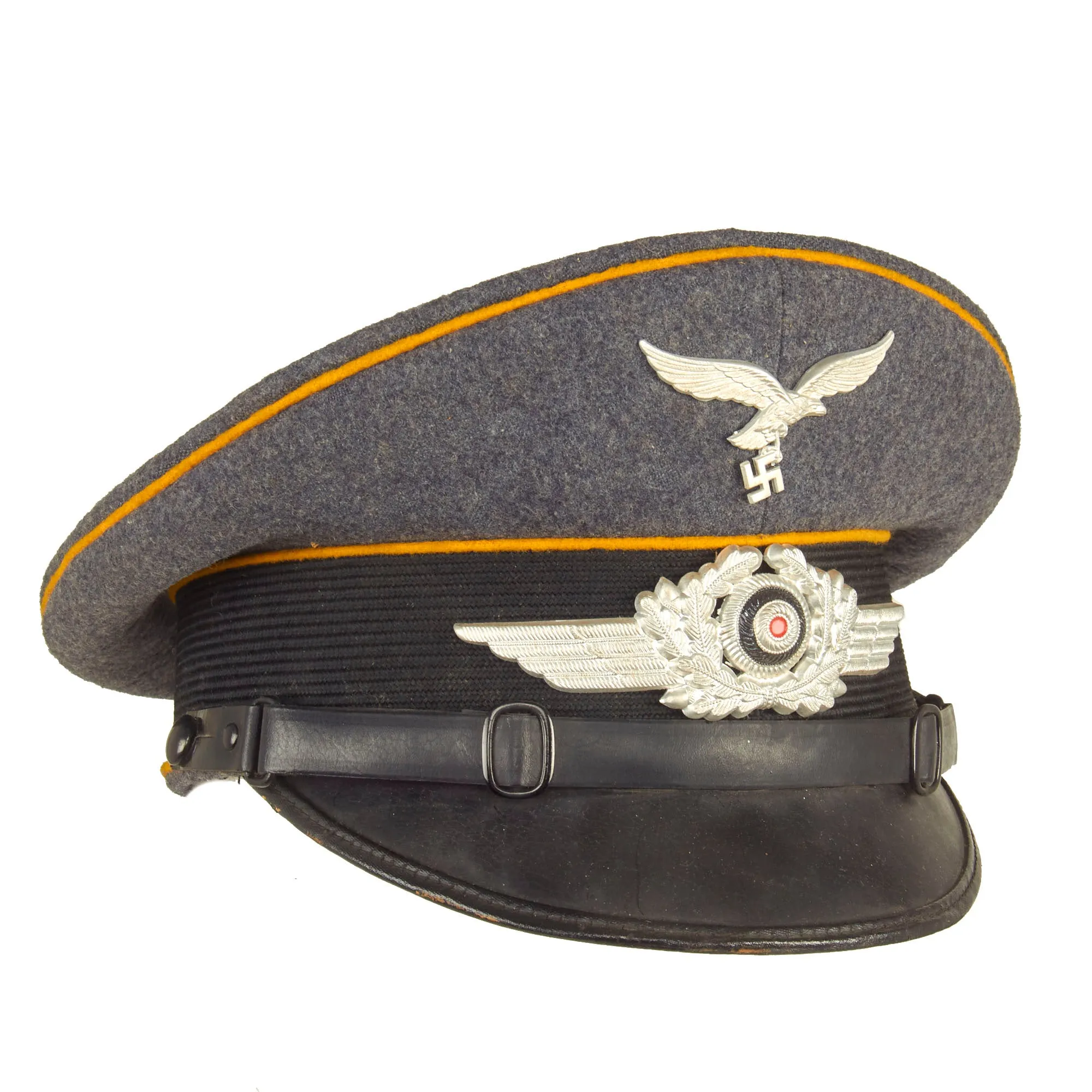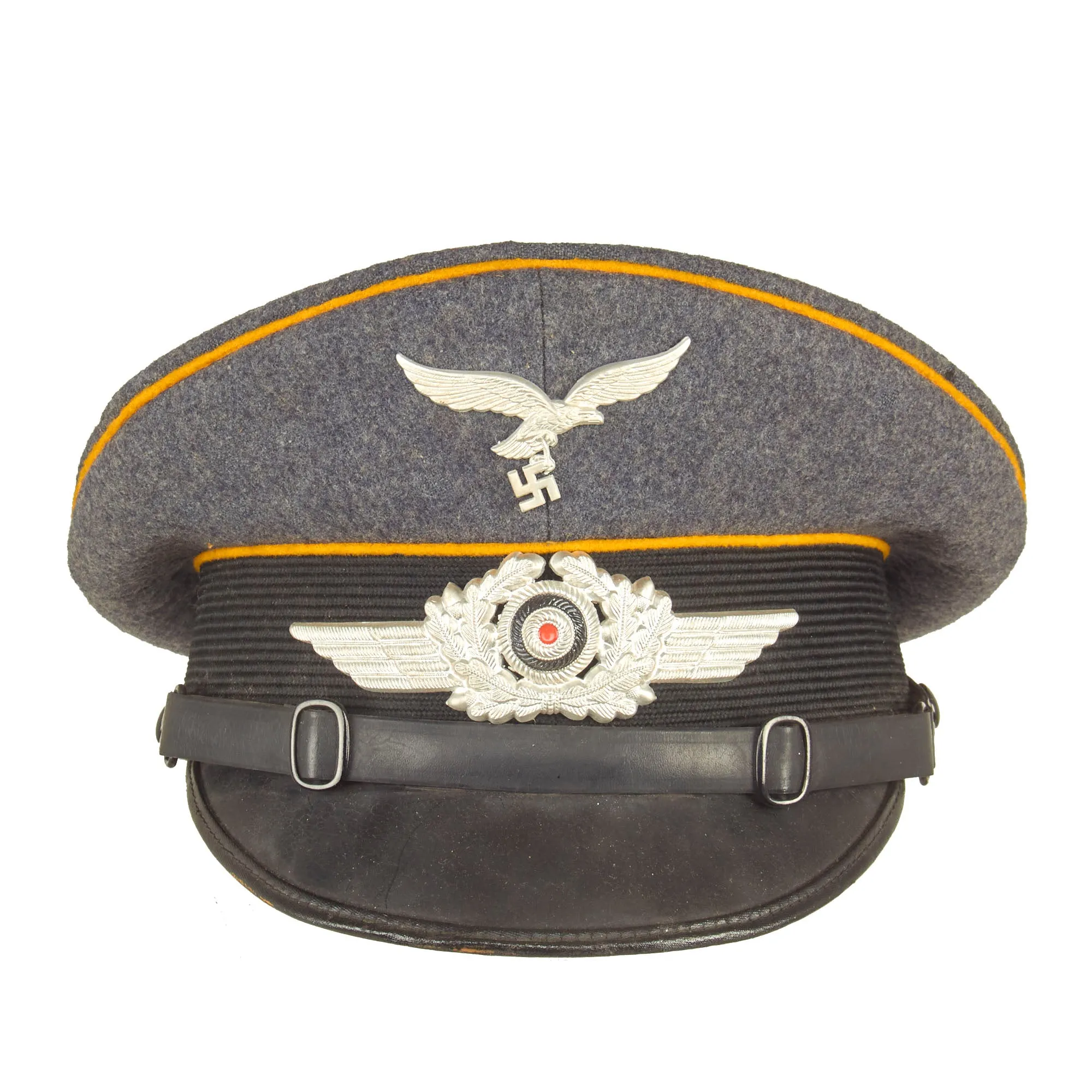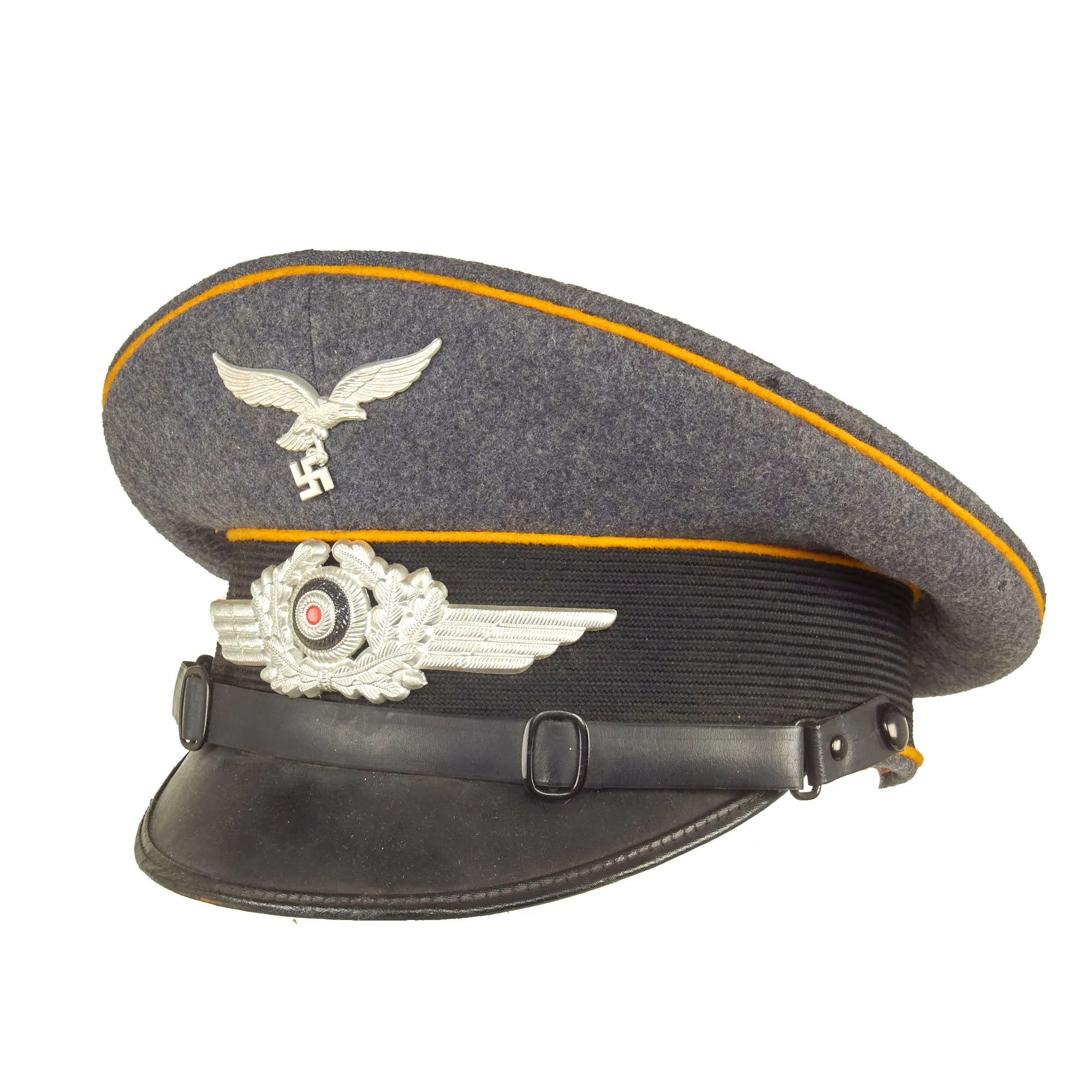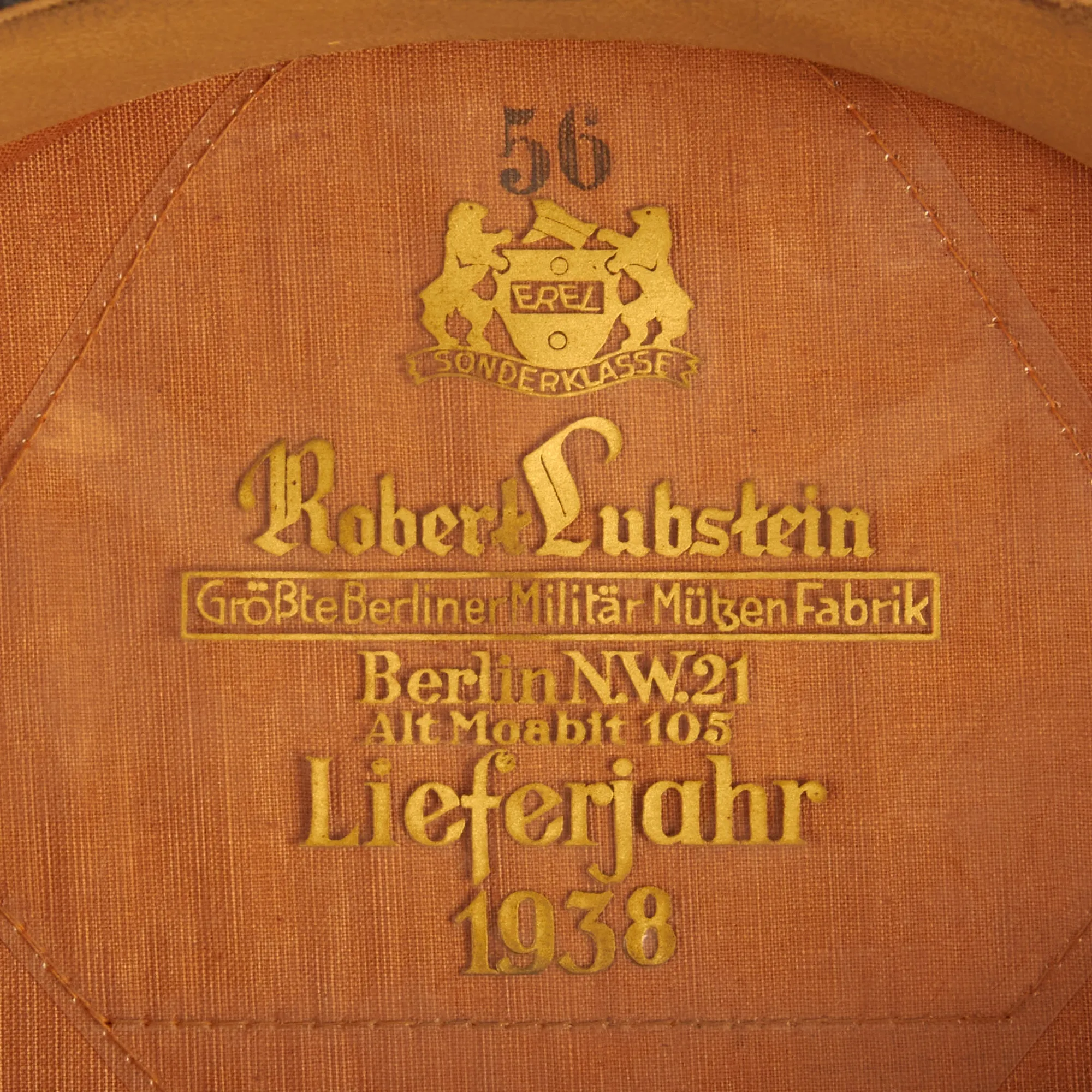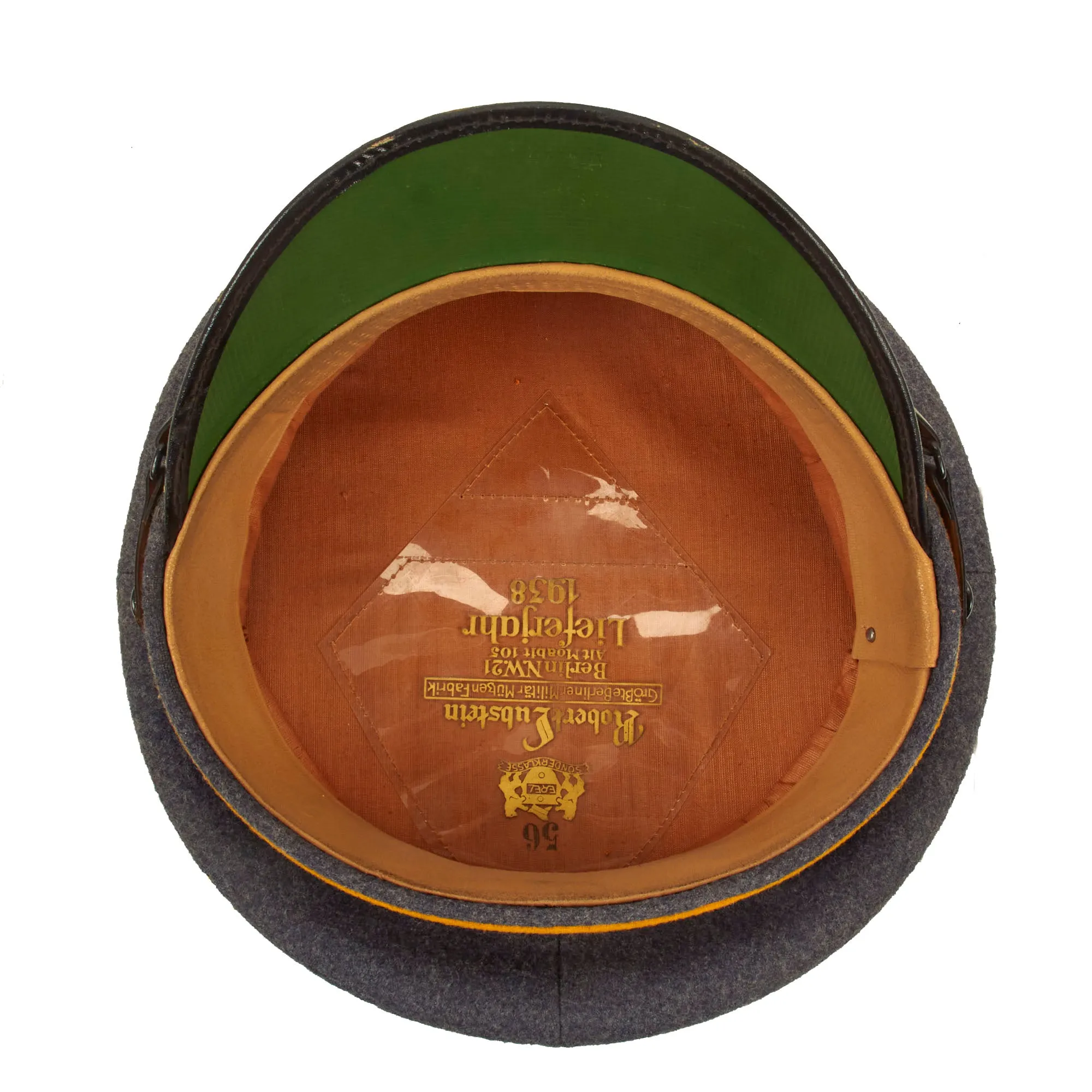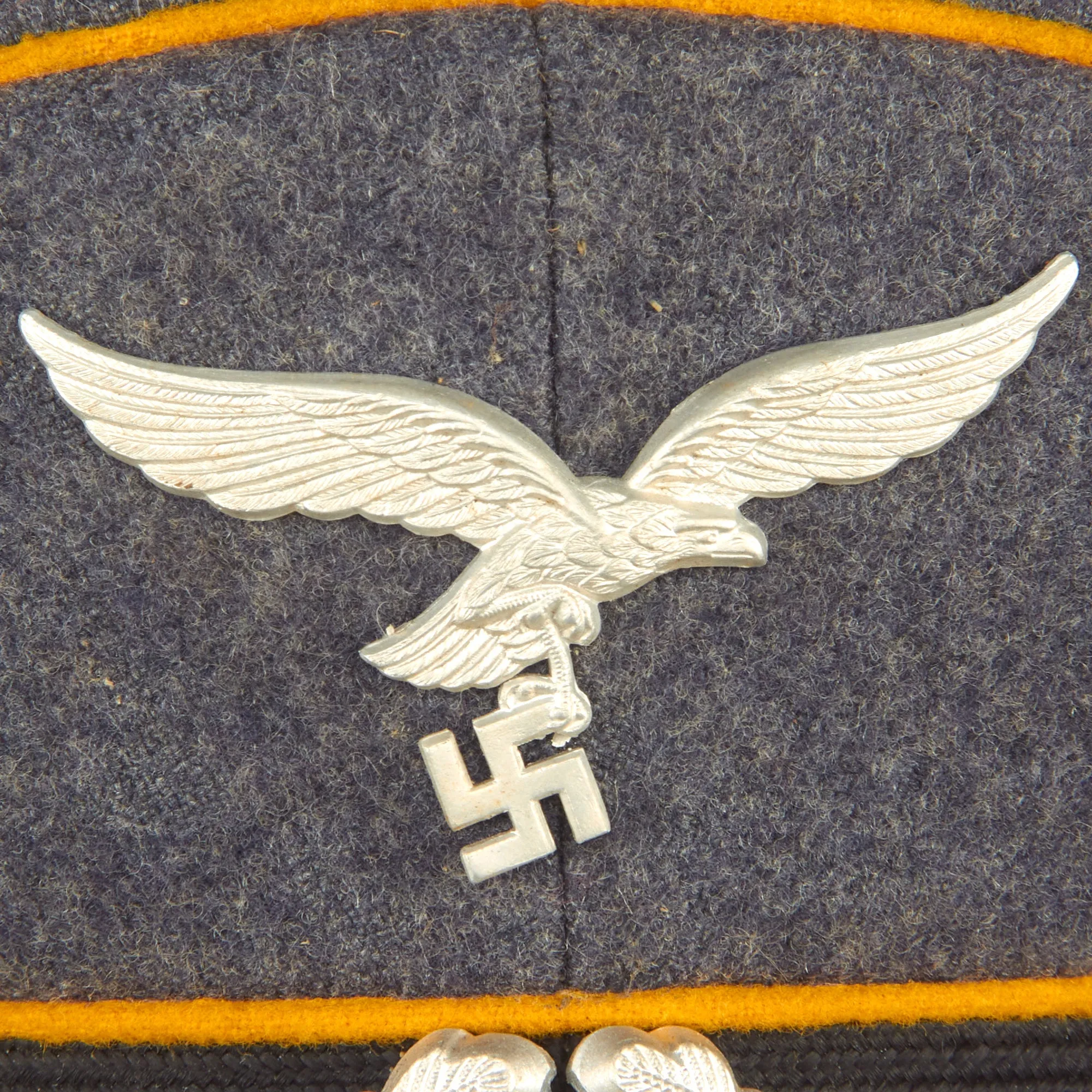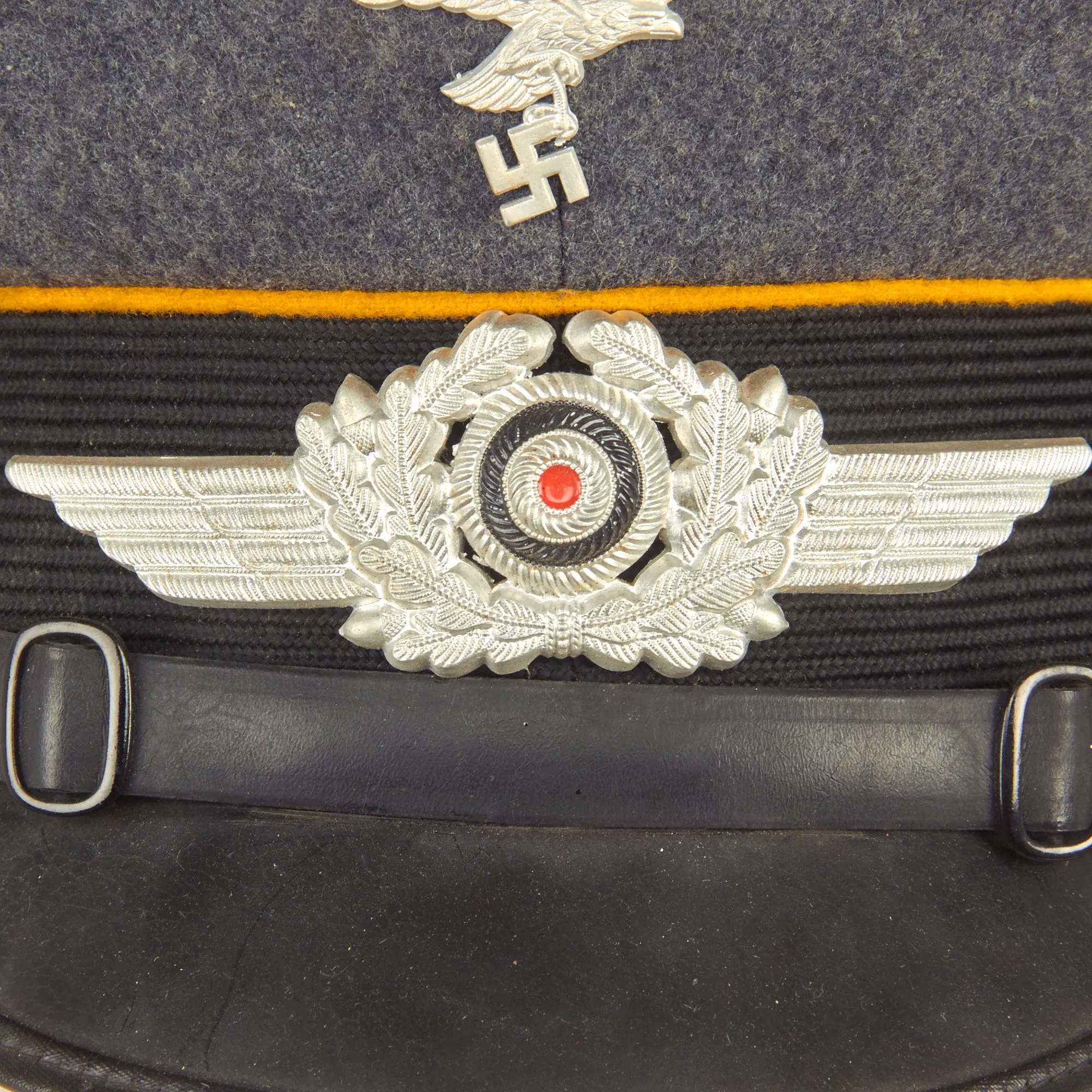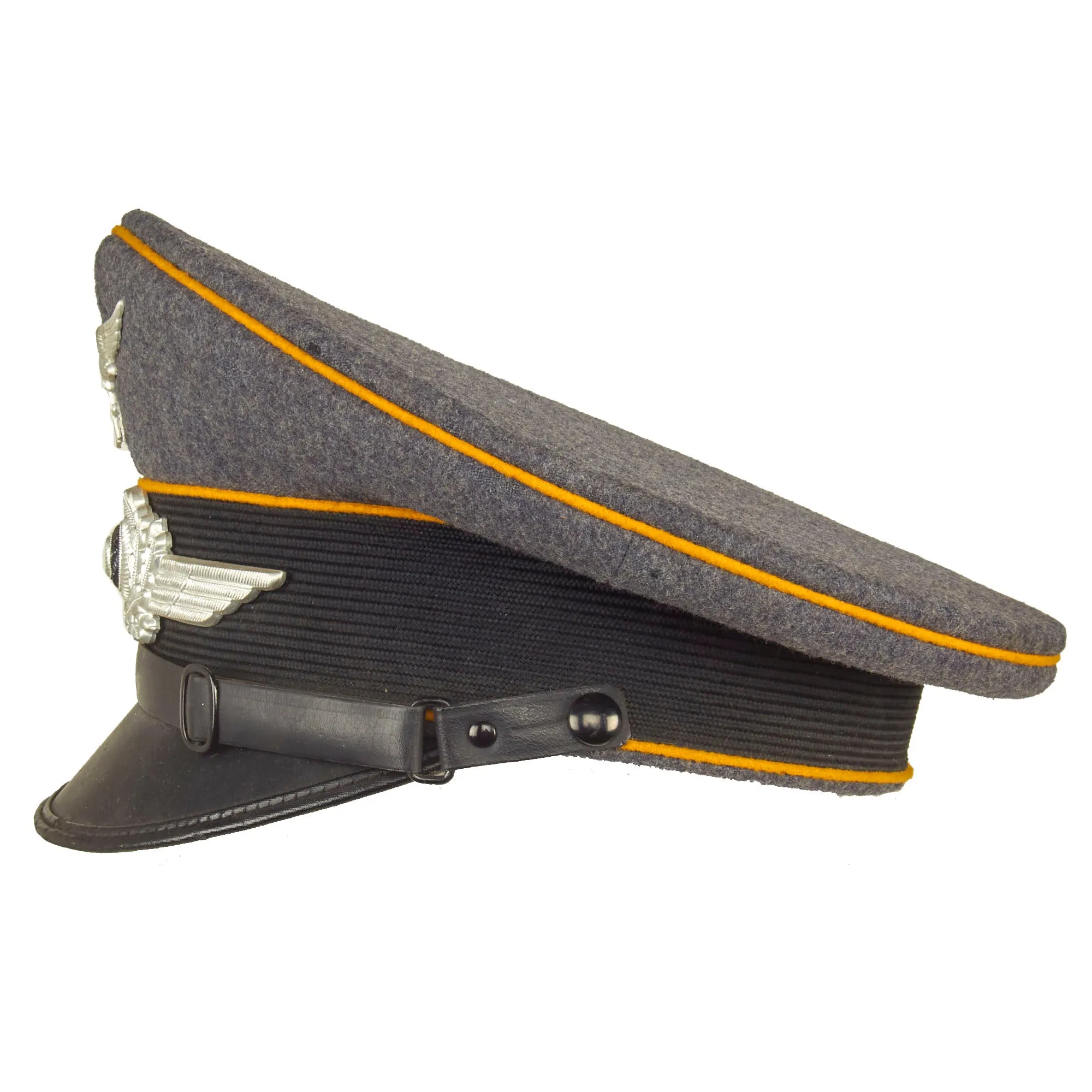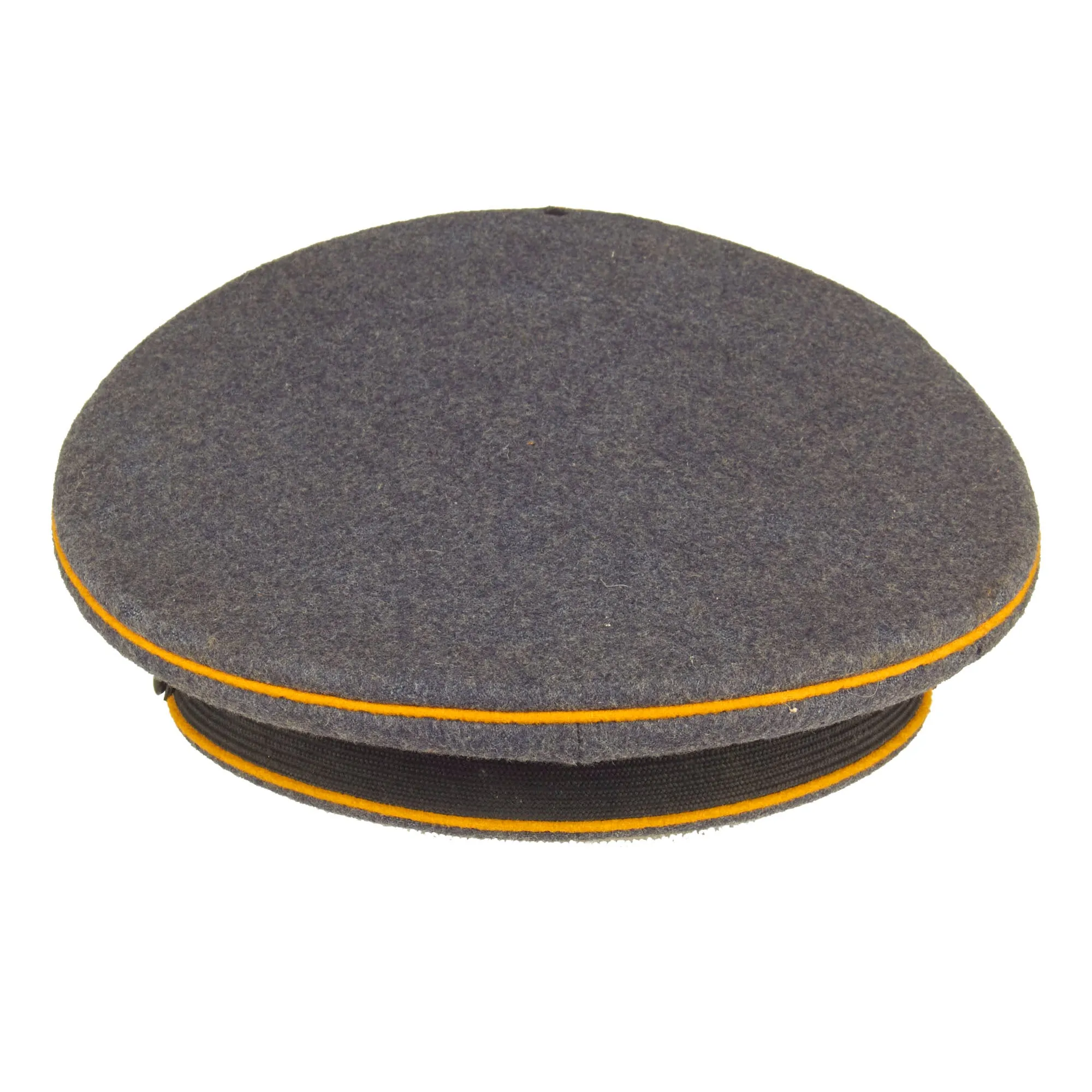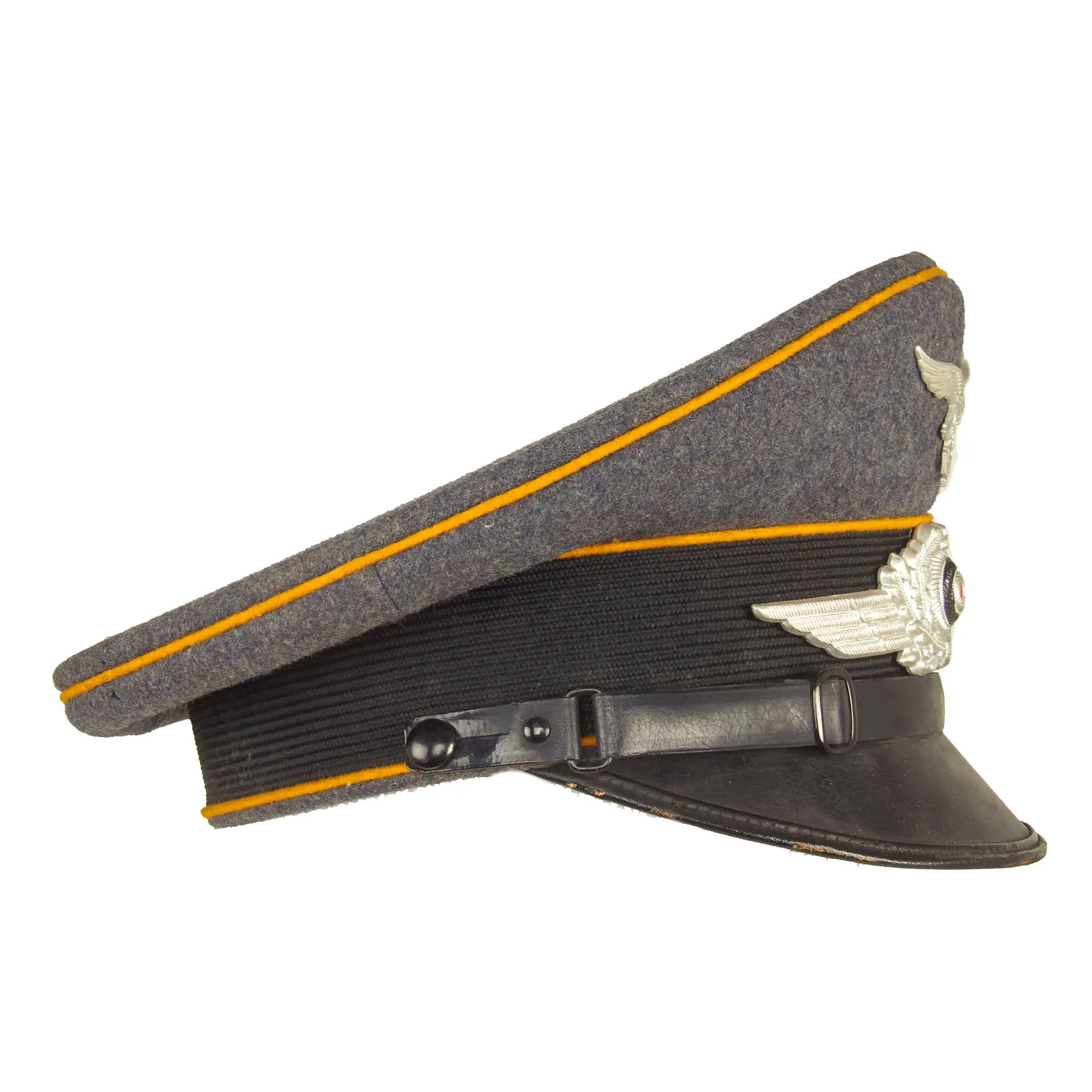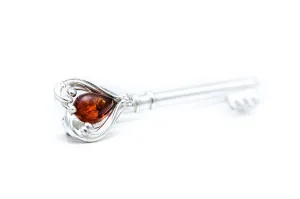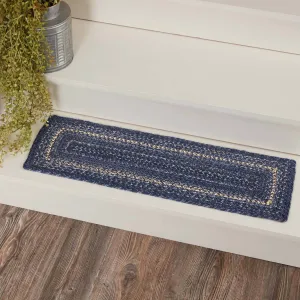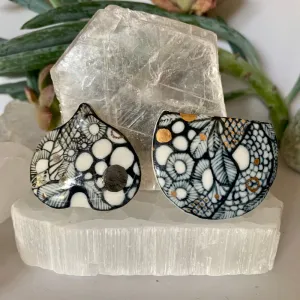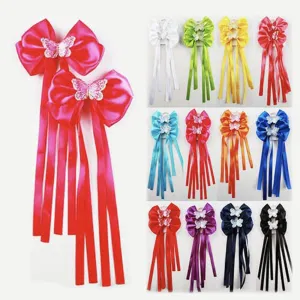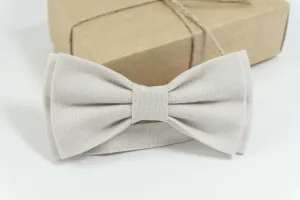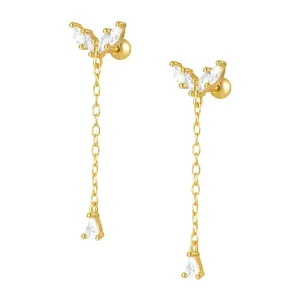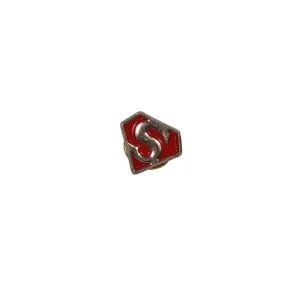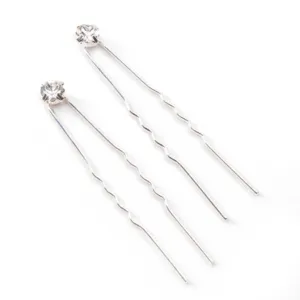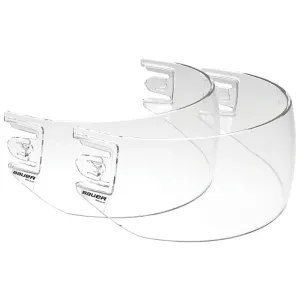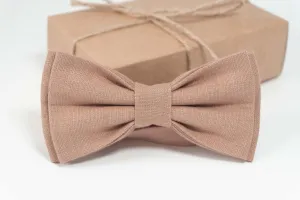Original Item: Only One available. This is a very good lightly used condition Luftwaffe Flight Branch EM/NCO Schirmmütze (Visor Cap), made by Robert Lubstein under their very desirable EREL brand, a top class maker of headwear during the war. It still has the original crown stiffener installed, so the sides have not sunken down over the years. This NCO Schirmmütze Visor Cap is an original high quality manufactured cap. It is fabricated in Luftwaffe blue gray Fliegerblau (Flier's Blue) "whipcord" weave wool, with wide black wool cap band, plus three rows of goldgelb (Gold-Yellow) color piping for the flight branch (Waffenfarbe) around the circumference. This included Aviator troops such as pilots and ground personnel as well as Fallschirmjäger (parachute troops).
The is decorated with the correct metal insignia, including a finely-detailed aluminum eagle on the peak, and an aluminum oak leaf wreath with stylized wings and central painted tri-color cockade on the band. The dual-buckled black leather chinstrap, designating the wearer to be an enlisted man, is attached to black lacquered buttons on either side. It shows only minor cracking and checking to the finish, very common on patent leather items of this age. The visor is the classic gloss black color with a faux leather stitched edge trim, made of pressed vulcanfibre, with a green underside. There is not much checking or crazing on the visor, and the edge trim is in wonderful condition. The visor is still solidly attached to the body of the cap.
The interior of the cap is lined with light brown "service cloth" type material, showing very little wear and no staining or other issues. The top celluloid sweat shield is completely intact, and in great shape with intact stitching, showing a size 56 over the fully legible maker logo and date:
EREL
SONDERLKLASSE
Robert Lubstein
Größte Berliner Militär Mützen Fabrik
Berlin N.W.21
Alt. Moabit 105
Lieferjahr
1938
"Lieferjahr" translates to "Delivery Year", so that is when the cap was slated to be delivered to the Luftwaffe. Robert Lubstein was a very well known distributor of caps, and was particularly known for their famous EREL brand of headgear.
The sweatband is tan leather, showing only minor staining, and is still quite supple. The stitching attaching it is fully intact, and the only real issue is that the foam rubber padding under the forehead vents is now cracked and quite "crunchy", which almost always happens due to the unstable nature of early rubber. We looked under the sweatband, and it is marked with Fl. Gr. GöPP in a rectangle, which is apparently for Fliegergruppe Göppingen. This is an area to the east of Stuttgart, and there were numerous flight groups based across Germany during the war.
Condition is really very good, with the only issues being some small moth nips / holes on the edge of the crown. The colors are still vibrant, and there is very little staining / soiling of any kind.
This is a great Luftwaffe Flight Branch EM/NCO peaked visor cap, offered in very good condition with some nice research potential. Ready to display!
The German Schirmmütze Visor Cap:
The visor cap (Schirmmütze) was an important part of the headgear worn by German uniformed military, civil, paramilitary and political organizations during the Third Reich. This was the standard cloth headgear worn as a part of the service uniform. Visor caps were worn outdoors as well as indoors, and were often required to be worn by all personnel on duty. Visor caps were made in versions specific to each organization and were often further differentiated through the use of insignia, colored piping, or style of chin cord, to indicate rank, role or branch. The insignia used on these caps ranged from simple stamped metal emblems, to elaborate hand embroidery. Visor caps were issued to enlisted soldiers and NCOs in the military and in some other organizations. Officers had to purchase their own hats, and lower ranks could choose to purchase caps that were of a higher quality than the rather basic, issue examples. The private purchase caps were generally made in very high quality, with fine materials. A wide variety of fabrics were used, from Trikot and doeskin, to heavy wool, or even lightweight white fabric for summer wear. In the military, issue of these caps was generally suspended shortly after the outbreak of the war, but they continued to be worn by some troops until the end of the war.




